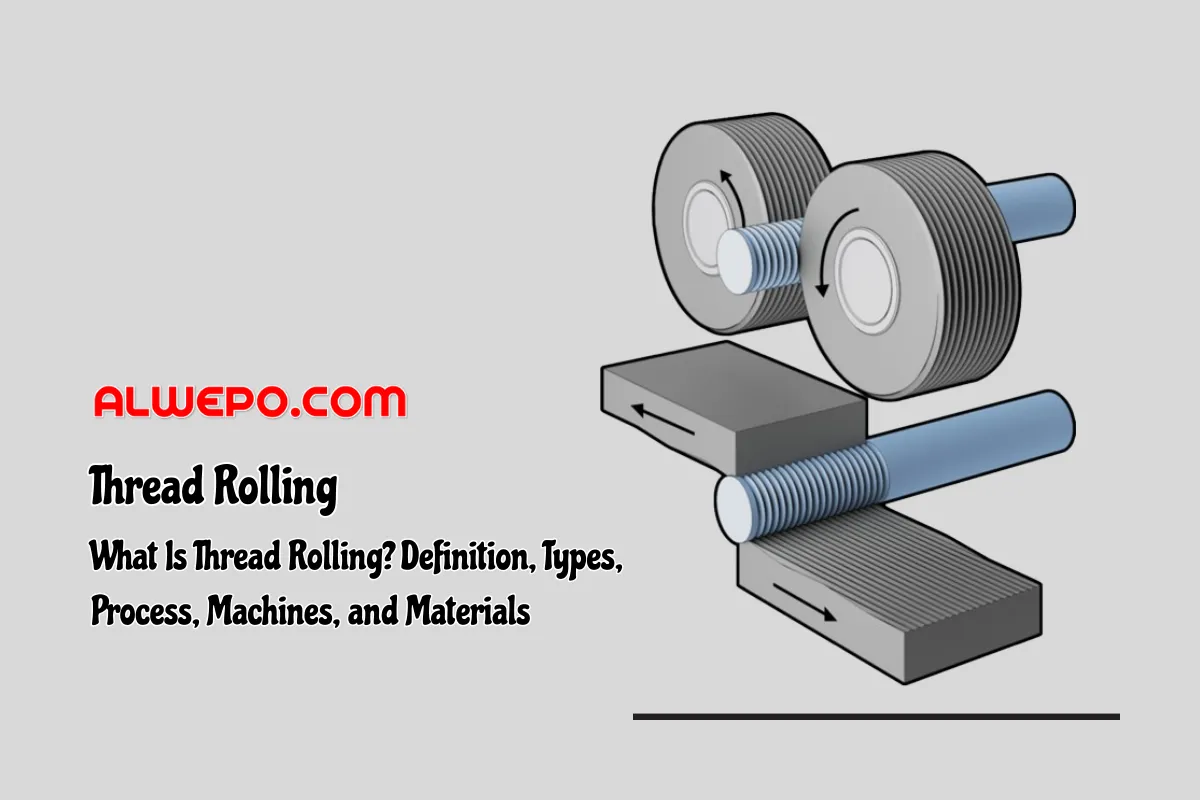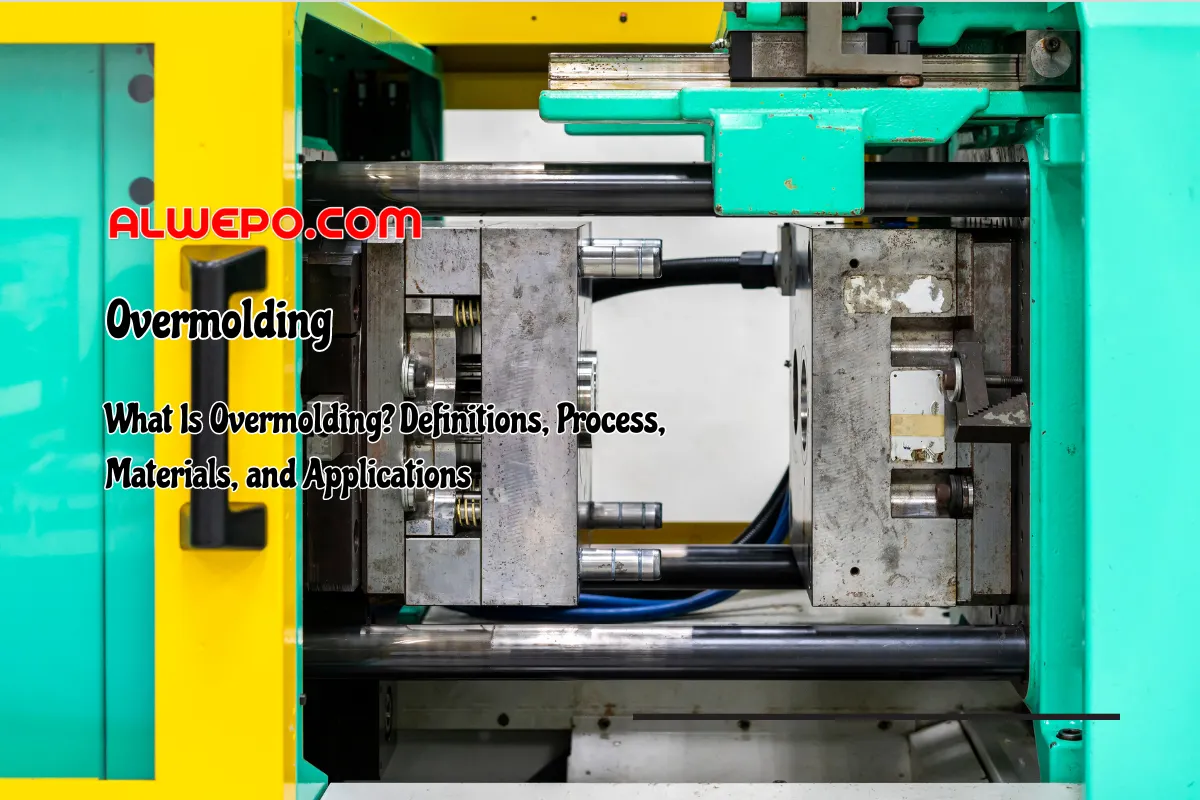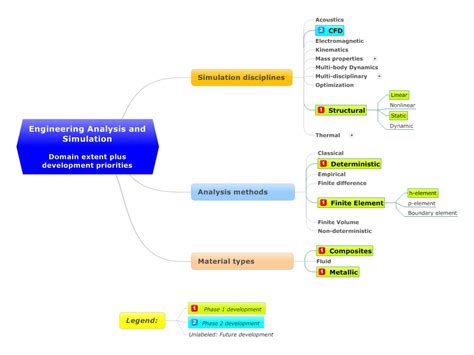alwepo.com, Thread rolling is a crucial manufacturing process that plays a significant role in producing threaded components across various industries. This article delves into the intricacies of thread rolling, exploring its definition, types, process, machines involved, and materials utilized.
Understanding these aspects is essential for engineers, manufacturers, and anyone interested in the mechanics behind creating high-quality threaded parts.
Definition of Thread Rolling
Thread rolling is a metalworking process that involves forming threads on a workpiece by pressing it against a rotating hardened steel die. Unlike traditional methods like threading or tapping, which involve cutting the threads, thread rolling displaces the material to form the threads, resulting in superior thread strength, surface finish, and dimensional accuracy. Let’s break down this definition and explore its various aspects in detail:
1. Metalworking Process
Thread rolling falls under the broader category of metalworking processes, which involve shaping, forming, or machining metal to create desired shapes, structures, or features. In the case of thread rolling, the primary objective is to form threads on a cylindrical workpiece to facilitate the assembly of threaded fasteners or other components.
2. Forming Threads
At the core of thread rolling is the process of forming threads on a workpiece. Threads are helical ridges or grooves that wrap around the circumference of a cylindrical or conical surface. These threads serve as mating surfaces for threaded fasteners, allowing for secure connections and assemblies in various mechanical applications.
3. Pressing Against a Rotating Hardened Steel Die
Unlike traditional methods such as threading or tapping, where threads are created by cutting or removing material from the workpiece, thread rolling involves a deformation process. The workpiece is pressed against a rotating hardened steel die, which serves as a tool to impart the desired thread profile onto the workpiece. The pressure exerted by the die causes the material of the workpiece to deform plastically, resulting in the formation of threads without the need for material removal.
4. Displacement of Material
One of the distinguishing features of thread rolling is its material displacement mechanism. Instead of removing material to create threads, thread rolling redistributes the material of the workpiece to form the threads. This displacement process results in several advantages, including increased thread strength, improved surface finish, and enhanced dimensional accuracy. By cold-forming the threads through material displacement, thread rolling produces threads with superior mechanical properties compared to traditional cutting methods.
5. Superior Thread Strength, Surface Finish, and Dimensional Accuracy
Thread rolling yields threads with exceptional strength, thanks to the cold-working process that increases the material’s hardness and resilience. Additionally, the absence of cutting forces eliminates the risk of introducing microcracks or surface imperfections, leading to a smoother surface finish. Moreover, thread rolling ensures precise thread dimensions and pitch accuracy, contributing to the overall quality and reliability of the threaded component.
Types of Thread Rolling
Thread rolling is a versatile manufacturing process that offers various methods for creating threads on cylindrical workpieces. Understanding the different types of thread rolling is crucial for selecting the most suitable technique for a specific application. Let’s explore the two primary types of thread rolling in detail:
1. Flat Die Thread Rolling (Cylindrical Die Thread Rolling)
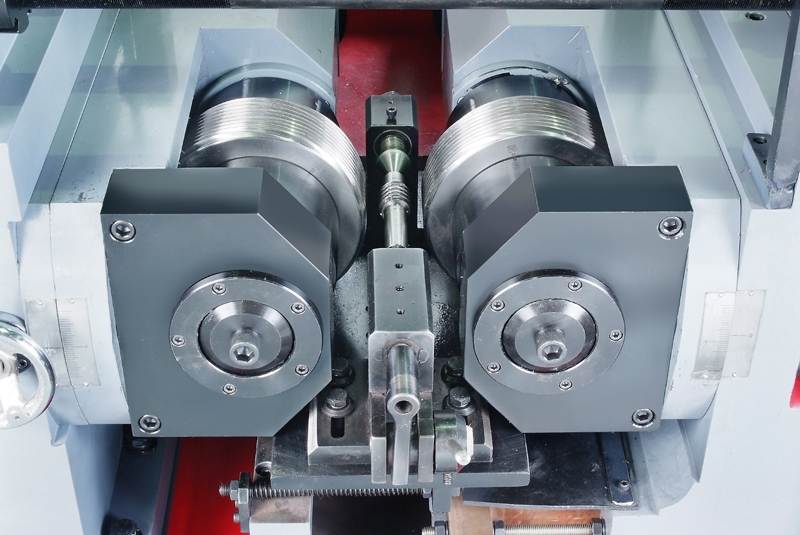
Process:
- Imagine two flat discs (dies) with engraved thread profiles.
- One die stays fixed, while the other one rotates.
- The cylindrical workpiece (e.g., bolt) is placed between the dies.
- As the rotating die presses against the workpiece, the material “flows” into the engraved grooves, forming the threads.
Advantages:
- High Production Speeds: Simple design allows for fast operation.
- Excellent Thread Quality: Precise dies create clean, accurate threads.
- Increased Material Strength: Cold forming process strengthens the material.
- Cost-Effective: Relatively simple machines make them affordable.
- Automation Friendly: Easy to integrate into automated mass production lines.
Applications:
- Commonly used for creating external threads on a wide range of parts like bolts, screws, studs, and other cylindrical components.
- Ideal for high-volume production where speed and cost-efficiency are priorities.
2. Planetary Thread Rolling (Radial/Cylindrical-Die Thread Rolling)
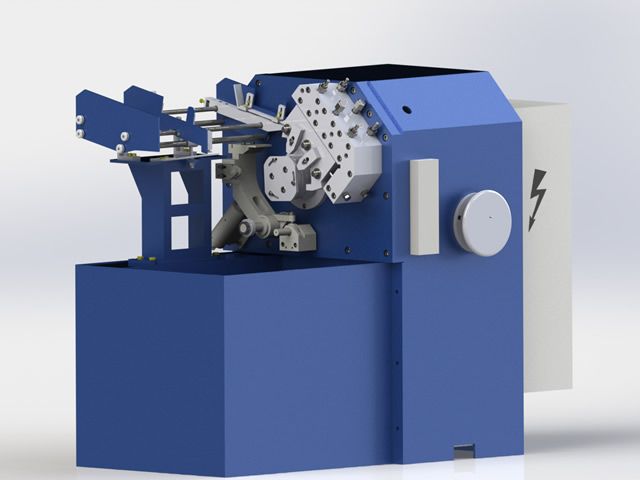
Process:
- This method uses multiple cylindrical dies arranged in a circular pattern.
- Instead of one rotating die, these dies “orbit” around the stationary workpiece.
- As the dies rotate, they press against the workpiece, forming the threads by deforming the material.
Advantages:
- High Versatility: Can create both internal and external threads.
- Complex Shapes and Tight Tolerances: Well-suited for intricate parts and highly precise applications.
- Excellent Precision and Repeatability: Ideal for demanding industries like aerospace, automotive, and medical.
Applications:
- Preferred for intricate components with complex shapes or tight tolerance requirements.
- Perfect for situations where a high degree of precision and control over the thread formation is crucial.
Here’s a table summarizing the key differences:
| Feature | Flat Die Thread Rolling | Planetary Thread Rolling |
|---|---|---|
| Process | Two flat dies, one stationary, one rotating | Multiple cylindrical dies orbiting workpiece |
| Thread Type | Primarily external threads | Internal and external threads |
| Advantages | High speed, good quality, strong threads, cost-effective, automation friendly | Versatile, complex shapes, tight tolerances, high precision, repeatability |
| Applications | High-volume, external threads (bolts, screws, etc.) | Intricate parts, precise applications (aerospace, automotive, medical) |
The Thread Rolling Process
The thread rolling process is a highly efficient method for producing threads on cylindrical workpieces. Let’s delve into each step of the process in detail:
1. Preparation
Before thread rolling can begin, the workpiece must undergo preparation. This typically involves turning or machining the workpiece to achieve the required diameter and length. Turning refers to the process of rotating a workpiece on a lathe while a cutting tool removes material to achieve the desired dimensions.
Machining involves using various cutting tools such as drills, mills, or lathes to shape the workpiece. The preparation step ensures that the workpiece is of the correct size and shape to undergo thread rolling.
2. Feeding
Once the workpiece is prepared, it is fed into the thread rolling machine. The feeding mechanism positions the workpiece accurately between the thread rolling dies. Proper alignment is crucial to ensure that the threads are formed accurately and consistently. Depending on the type of thread rolling machine used, the feeding mechanism may vary. In flat die thread rolling machines, the workpiece is typically fed manually or automatically into the gap between the stationary and rotating dies.
In planetary thread rolling machines, the workpiece is usually held in place while the cylindrical dies orbit around it.
3. Rolling
With the workpiece positioned between the dies, the rolling process begins. The dies, whether flat or planetary, exert pressure on the workpiece while simultaneously rotating. This pressure causes the material to deform and flow, gradually forming the threads. Unlike traditional threading methods like cutting or grinding, where material is removed to create the threads, thread rolling displaces the material to form the threads.
This cold forming process results in stronger, more precise threads with improved mechanical properties. The rotation of the dies ensures that the threads are formed uniformly along the length of the workpiece.
4. Finishing
After the thread rolling operation is complete, the workpiece may undergo additional finishing processes to enhance its properties. These processes may include cleaning to remove any debris or lubricants used during thread rolling. Heat treatment may be employed to improve the hardness, strength, or other mechanical properties of the threaded component. Surface coating techniques such as plating or painting may also be applied to provide corrosion resistance or improve aesthetics.
The finishing step ensures that the threaded component meets the required specifications and standards for its intended application.
Machines Used in Thread Rolling
Machines used in thread rolling play a critical role in shaping and forming threads on cylindrical workpieces. These machines are designed to apply pressure to the workpiece while rotating the dies, facilitating the thread rolling process. Let’s explore the various types of machines used in thread rolling in detail:
1. Flat Die Thread Rolling Machines
Flat die thread rolling machines are commonly used for producing external threads on cylindrical workpieces such as bolts, screws, and studs. These machines typically consist of two flat dies—one stationary and one rotating—between which the workpiece is positioned. The stationary die provides support, while the rotating die applies pressure to the workpiece, deforming the material to form threads. Flat die thread rolling machines are available in various configurations, including manual, semi-automatic, and fully automated models, allowing for flexibility in production volume and complexity.
2. Planetary Thread Rolling Machines
Planetary thread rolling machines utilize cylindrical dies that orbit around the workpiece in a planetary motion. Unlike flat die thread rolling machines, where the dies are stationary relative to each other, in planetary thread rolling, the dies move around the workpiece while exerting pressure to form threads. This rotational motion enables planetary thread rolling machines to produce both internal and external threads with high precision and consistency. Planetary thread rolling machines are often preferred for applications requiring complex thread geometries or tight tolerances, such as in the aerospace and automotive industries.
3. Hydraulic Thread Rolling Machines
Hydraulic thread rolling machines employ hydraulic pressure to apply force to the dies, enabling the deformation of the workpiece to form threads. These machines are particularly suitable for rolling threads on larger or harder materials that require greater force to shape. Hydraulic thread rolling machines offer advantages such as enhanced control over the rolling process, increased versatility in handling different workpiece materials and sizes, and improved operator safety. They are commonly used in industries such as construction, heavy equipment manufacturing, and oil and gas.
4. CNC Thread Rolling Machines
CNC (Computer Numerical Control) thread rolling machines are equipped with programmable controls that automate the thread rolling process. These machines allow for precise control over parameters such as thread pitch, depth, and diameter, enabling the production of threads with high accuracy and repeatability. CNC thread rolling machines are capable of handling complex thread profiles and can be integrated into automated production lines for increased efficiency and productivity. They find applications in industries requiring tight tolerances and high-volume production, such as automotive, aerospace, and electronics manufacturing.
5. Specialized Thread Rolling Machines
In addition to the aforementioned types, specialized thread rolling machines are available to meet specific manufacturing requirements. These machines may incorporate unique features or configurations tailored to particular applications or industries. For example, thread rolling machines designed for producing threads on long shafts or rods may feature extended die configurations or additional support mechanisms. Similarly, thread rolling machines used for forming threads on non-cylindrical workpieces may employ custom dies or tooling setups.
Materials Used in Thread Rolling
Materials used in thread rolling play a crucial role in determining the quality, strength, and performance of the threaded components. The choice of material depends on factors such as the application requirements, environmental conditions, and manufacturing constraints. Let’s explore the various materials commonly used in thread rolling in detail:
1. Steel
Steel is one of the most widely used materials in thread rolling due to its excellent mechanical properties, including strength, toughness, and durability. Carbon steel, alloy steel, and stainless steel are commonly employed in thread rolling applications. Carbon steel offers good machinability and strength, making it suitable for general-purpose threaded components. Alloy steel, with added alloying elements such as chromium, molybdenum, or nickel, provides enhanced mechanical properties, including increased strength and corrosion resistance. Stainless steel is preferred for applications requiring superior corrosion resistance, such as in marine environments or chemical processing industries.
2. Stainless Steel
Stainless steel is a specialized category of steel that contains chromium and other alloying elements to provide resistance to corrosion, rust, and staining. Stainless steel is widely used in thread rolling applications where corrosion resistance is paramount, such as in the food and beverage industry, medical devices, and outdoor equipment. The austenitic grades of stainless steel, such as 304 and 316, are particularly popular for their excellent corrosion resistance and mechanical properties.
3. Aluminum
Aluminum is a lightweight and corrosion-resistant material that finds applications in various industries, including automotive, aerospace, and electronics. While aluminum is not as strong as steel, it offers advantages such as low density, high thermal conductivity, and ease of machining. Thread rolling on aluminum workpieces requires careful consideration of parameters such as thread depth, pitch, and die material to prevent deformation or damage to the soft aluminum surface. Aluminum threaded components are commonly used in lightweight structures, heat exchangers, and electrical connectors.
4. Brass
Brass is a copper-zinc alloy renowned for its excellent machinability, corrosion resistance, and aesthetic appeal. Brass threaded components are widely used in decorative applications, plumbing fixtures, electrical connectors, and musical instruments. Thread rolling on brass workpieces requires specialized tooling and lubricants to ensure smooth thread formation and prevent galling or seizing. Brass offers advantages such as high electrical conductivity, antimicrobial properties, and decorative finishes, making it a versatile choice for various applications.
5. Titanium
Titanium is a lightweight and corrosion-resistant metal renowned for its exceptional strength-to-weight ratio and biocompatibility. Titanium threaded components find applications in aerospace, medical implants, sporting goods, and automotive industries. Thread rolling on titanium workpieces requires careful control of parameters such as rolling speed, pressure, and lubrication to avoid material galling or work hardening. Titanium offers advantages such as high strength, low density, and resistance to corrosion, making it suitable for demanding applications in harsh environments.
Conclusion
Thread rolling is a versatile and efficient method for producing high-quality threads with superior strength, accuracy, and surface finish. By understanding the types, process, machines, and materials involved in thread rolling, manufacturers can optimize their production processes and deliver reliable threaded components across various industries. Embracing thread rolling techniques can lead to cost savings, improved product performance, and enhanced customer satisfaction. As industries continue to evolve, thread rolling remains a cornerstone of modern manufacturing, shaping the way we create threaded components for diverse applications.

